Top 50 Public Pharmacy Schools in the US
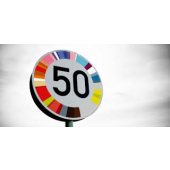
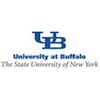 21. University at Buffalo School of Pharmacy and Pharmaceutical Sciences, Buffalo, New York
21. University at Buffalo School of Pharmacy and Pharmaceutical Sciences, Buffalo, New York
Founded in 1846, University at Buffalo is the largest campus of the 64-campus State University of New York (SUNY) system. The school, which spans 1,300 acres+, has three campuses and a student population of 57,904. Offerings include around 400 degree programs offered through the College of Arts and Sciences, 11 professional schools, and a Graduate division at Roswell Park Cancer Institute.
University at Buffalo School of Pharmacy and Pharmaceutical Sciences was established in 1886. It is “the second-oldest component of the University at Buffalo and the only pharmacy school in the State University of New York system.” Ranked among the Top Pharmacy Schools in the U.S., the School of Pharmacy and Pharmaceutical Sciences offers the Pharm.D., and a variety of dual degree programs.
Dual degree offerings include the Pharm.D./MBA, Pharm.D./MPH, Pharm.D./JD, Pharm.D./Ph.D., and the Pharm.D./M.S. The School of Pharmacy also offers a M.S. and a Ph.D. in Pharmaceutical Sciences, a B.S. in Pharmaceutical Sciences, an accelerated B.S./M.S. in Pharmaceutical Sciences, and a Pre-pharmacy program.
Tuition for the University at Buffalo School of Pharmacy and Pharmaceutical Sciences is $22,610 for 9.5 months.
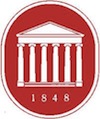 22. University of Mississippi School of Pharmacy, Jackson, Mississippi
22. University of Mississippi School of Pharmacy, Jackson, Mississippi
The University of Mississippi (Ole Miss) is the flagship university for the state of Mississippi. Founded in 1848, the school began instruction with just 80 students. Today, the school is home to more than 21,500 students, making it the largest school in the state of Mississippi.
The University of Mississippi consists of 2,500-acre main campus at Jackson, along with four additional campuses in Southaven, Tupelo, Booneville, and Grenada, Mississippi. The school offers more than 100 academic programs across 12+ colleges and schools. This includes the School of Pharmacy.
Founded in 1908, the University of Mississippi School of Pharmacy is the state’s only pharmacy school. Offerings include the Pharm.D., and M.S. and Ph.D. programs in Pharmaceutical Sciences with emphases in Environmental Toxicology, Medicinal Chemistry, Pharmaceutics, Pharmacognosy, Pharmacology, and Pharmacy Administration.
The School, which is home to more than 800 students, also offers a B.S. in Pharmaceutical Sciences, and a Pre-pharmacy program. Tuition for the University of Mississippi School of Pharmacy varies by program and year. Resident tuition and fees for Early Education and Pre-pharmacy programs total $9,292.00 per year.
Resident tuition for the Professional Pharmacy program is $17,898 for the first year of study, $17,588.00 for the second year, $18,996 for year 3, and $18,960 for year 4. Tuition for non-residents is $12,776 for Early Education and Pre-pharmacy programs, $20,138 for the Professional Pharmacy program years 1-2, and $21,984 for years 3-4.
 23. University of Colorado Skaggs School of Pharmacy and Pharmaceutical Sciences, Aurora, Colorado
23. University of Colorado Skaggs School of Pharmacy and Pharmaceutical Sciences, Aurora, Colorado
Founded in 1876, the University of Colorado has a total student population of 60,000 (all campuses) enrolled in more than 150 programs across nine colleges and schools. The University has campuses in Boulder (main, 700 acres), Colorado Springs, Denver, and Aurora, Colorado. The Aurora campus, better known as “CU Anschutz Medical Campus,” is home to the University of Colorado Skaggs School of Pharmacy and Pharmaceutical Sciences.
The Skaggs School of Pharmacy and Pharmaceutical Science at University of Colorado was established in 1911. When it opened, the School was home to just two students and one faculty member. Today, the Skaggs School is home to 600 students and 55 faculty members. Many of the School’s faculty members rank among the Top Doctors in the state.
The Skaggs School offers the Pharm.D., a nontraditional Pharm.D., and Ph.D. degrees in Pharmaceutical Sciences & Toxicology, and Pharmaceutical Outcomes Research. Tuition for the 2013-14 academic year is $24,614 for residents and $38,891 for non-residents.
 24. University of Connecticut School of Pharmacy, Storrs, Connecticut
24. University of Connecticut School of Pharmacy, Storrs, Connecticut
The University of Connecticut consists of one main campus and five regional campus.
Founded in 1881, the University is a Land Grant & Sea Grant college with a student population of more than 30,000. The school offers more than 200 academic programs throughout 14 colleges and schools. This includes the School of Pharmacy.
Better known as “UConn School of Pharmacy,” the University of Connecticut School of Pharmacy opened to the public on October 20, 1925. The School offers the Pharm.D., a Ph.D. in Pharmaceutical Sciences, and several dual degree programs. Dual offerings include a Pharm.D./MBA, Pharm.D./MPH, and a Pharm.D./Ph.D. in Pharmaceutical Sciences. UConn School of Pharmacy also offers a Pre-pharmacy program.
Resident tuition for the Pre-pharmacy program and Professional Years 1-2 is $12,022. Tuition for years 3-4 is $23,306. Tuition for New England regional residents [MA, ME, NH, VT] is $18,964 for years 1-2 and $38,712 for years 3-4. Non-resident tuition is $30,970 for the Pre-pharmacy program and Professional Years 1-2, and $47,098 for years 3-4.
 25. West Virginia University School of Pharmacy, Morgantown, West Virginia
25. West Virginia University School of Pharmacy, Morgantown, West Virginia
U.S. News & World Report lists West Virginia University as a Top 100 Public University. Founded in 1867, the University sits on a 1,099-acre campus and it is home to nearly 30,000 students. West Virginia University offers 184 degree programs across 15 colleges and schools. This includes the School of Pharmacy.
Designated a “Program of Excellence” by the WV Higher Education Policy Commission (2005), the West Virginia School of Pharmacy offers the Pharm.D., and a Ph.D. in Pharmaceutical and Pharmacological Sciences with two pathways. Pathways include Pharmaceutical and Pharmacological Sciences (PPS) and Health Outcomes (HO). The School of Pharmacy also offers a Pre-pharmacy program.
Tuition for West Virginia University School of Pharmacy is $776 per credit hour or $13,968 per year for residents and $1,843 per credit hour or $33,174 per year for non-residents.
 26. University of Nebraska College of Pharmacy, Omaha, Nebraska
26. University of Nebraska College of Pharmacy, Omaha, Nebraska
The University of Nebraska Omaha was established in 1908. Part of the University of Nebraska system, the school “spans more than 150 acres on multiple campuses in the heart of Omaha. The University offers more than 100 academic programs across a number of colleges and schools.
The University of Nebraska College of Pharmacy was the third Pharmacy School in the U.S. to offer the Pharm.D. degree. In addition to the Pharm.D. the College offers a M.S. or Ph.D. in Pharmaceutical Sciences.
Tuition for the College of Pharmacy is $9,164 per semester for residents and $18,332 per semester for non-residents.
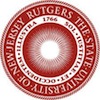 27. Rutgers University Ernest Mario School of Pharmacy, Piscataway, New Jersey
27. Rutgers University Ernest Mario School of Pharmacy, Piscataway, New Jersey
Rutgers, the State University of New Jersey, was chartered in 1766 as Queens College in New Brunswick, New Jersey. Originally an all-male college, Rutgers University is now a co-educational school with a population of more than 65,000 students. In addition to being one of the oldest universities in the U.S., Rutgers is the only university in the United States that is a colonial college, Land Grant institution, and public university.
Rutgers University sits on a 2,695-acre campus and it offers more than 300 programs across 33 colleges and schools. This includes the Ernest Mario School of Pharmacy.
Established in 1892, the Ernest Mario School of Pharmacy offers a variety of programs for aspiring pharmacists including the Pharm.D., and M.S. and Ph.D. degrees in Medicinal Chemistry and Pharmaceutical Sciences.
The School also offers a M.B.S. in Drug Discovery & Development, and several dual degree programs. Dual programs include the Pharm.D./Ph.D., Pharm.D/MPH, and the Pharm.D/MBA.
Resident tuition for the Ernest Mario School of Pharmacy is $14,687 and $30,239 for non-residents.
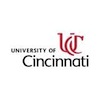 28. University of Cincinnati, James L. Winkle College of Pharmacy, Cincinnati, Ohio
28. University of Cincinnati, James L. Winkle College of Pharmacy, Cincinnati, Ohio
The University of Cincinnati was established in 1819. Ranked among the Best National Universities by U.S. News & World Report, the University of Cincinnati was the first school in the U.S. to offer a Bachelor’s degree in Nursing and Emergency Medicine residency program. The school, which sits on a 473-acre campus, is home to 41,970 students enrolled in nearly 400 programs of study across 18 colleges and divisions—including the James L. Winkle College of Pharmacy
Established in 1850 as the Cincinnati College of Pharmacy, the James L. Winkle College of Pharmacy offers the Pharm.D. and M.S. and Ph.D. programs in Pharmaceutics, Pharmacology, and Social & Administrative Sciences. The College also offers part-time distance learning Tracks in Drug Development and Cosmetic Science.
Other offerings include online Graduate Certificates in Clinical Trials Design and Research: New Drug and Device Development, Global Regulatory Affairs in Drug Development, and Cosmetic Science.
Tuition for the James L. Winkle College of Pharmacy is $8,965 per year for residents, $15,303 for non-residents, and $11,215 for metropolitan residents (Pharm.D. only).
 29. Virginia Commonwealth University School of Pharmacy, Richmond, Virginia
29. Virginia Commonwealth University School of Pharmacy, Richmond, Virginia
Established in 1838 as the Medical College of Virginia (MCV), Virginia Commonwealth University (VCU) is home to more than 31,000 students, 13 schools, and one college. The school, which sits on a 143-acre campus offers 220 certificate and degree programs, including 33 nationally ranked programs.
The VCU School of Pharmacy ranks among the nation’s Top Professional Graduate Programs. Established in 1898, it is also one of the nation’s oldest pharmacy programs. In addition, in 1971, the VCU School of Pharmacy became one of the first schools in the U.S. to provide a 640-hour clerkship program.
The VCU School of Pharmacy offers the Pharm.D., and several dual degree programs including the Pharm.D./Ph.D., Pharm.D./M.S., Pharm.D./MBA, Pharm.D./MPH and the Pharm.D./Certificate of Aging Studies. The School also offers Ph.D., M.S. and M.P.S. degrees with tracks in Medicinal Chemistry, Pharmaceutics, Pharmacotherapy, and Pharmacoeconomics and Health Outcomes.
Resident tuition for the VCU School of Pharmacy is $6,099.73 for 9-15 credit hours and $11,639.23 for 9-15 credit hours for non-residents.
 30. Temple University School of Pharmacy, Philadelphia, Pennsylvania
30. Temple University School of Pharmacy, Philadelphia, Pennsylvania
Temple University was chartered in 1888 as “The Temple College.” Back then, the College was “an Educational Institution intended primarily for the benefit of Working Men.” Today, this urban public research university has a co-ed student population of more than 36,000.
In addition to a diverse student body, Temple University has nine U.S. and international campuses—including Rome and Tokyo, which is the oldest and largest foreign university in Japan. The main campus, which sits on 330 acres, houses 17 schools and colleges offering more than 300 academic programs. This includes Temple University’s top-tier Pharmacy program.
The Temple University School of Pharmacy is home to more than 800 students and it offers the professional Pharm.D., and Ph.D. and M.S. degrees in Medicinal Chemistry, Pharmaceutics, and Pharmacodynamics. The School also offers Non-thesis based M.S. programs in Quality Assurance/Regulatory Affairs, and Pharmaceutics.
Resident tuition is $13,006 for the 2012-13 school year and $22,832 for non-residents.
Pages

- Facebook Like
- Google Plus One
- 272062 reads


